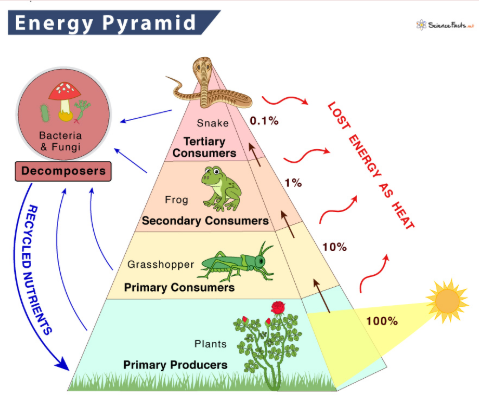Energy Pyramid and Symbiosis
1/14
Earn XP
Description and Tags
Name | Mastery | Learn | Test | Matching | Spaced |
|---|
No study sessions yet.
15 Terms
Primary consumers are (herbivores / omnivores / carnivores)
Herbivores
Secondary consumers are (herbivores / omnivores / carnivores)
Omnivores
Tertiary consumers are (herbivores / omnivores / carnivores)
Carnivores
Decomposers are (herbivores / omnivores / carnivores)
JK! Detritivores 😉
As we go up the energy pyramid, energy decreases by _____.
10% of the energy; divide by 10

Symbiosis
A relationship that may exist between two or more organisms of different species when they live and work together (ex: commensalism, mutualism, and parasitism)
Mutualism
Both organisms benefit (+, +)
Commensalism
One benefits, other doesn't (+, 0)
Parasitism
One organism benefits, other is harmed (+, -)
Competition
Struggles with other members of the same population for basic needs (food, water, etc.), mates and territory
Cooperation
When members of the same or different population work with each other to meet their basic needs
Interdependence
A behavior shown by organisms or populations that rely on each other for basic needs; they need one another for survival
Social hierarchy
An organization system within a group of organisms in which each member is ranked; organisms ranked higher receive more resources than organisms ranked lower
Territorial imperative
A behavior exhibited by animals like birds, fish, reptiles and mammals where they maintain a specific area in which to live (a territory); by protecting their territory they maintain their food and other resources found within
Niche
The role an organism fills in an ecosystem (ex: producer, consumer, etc.)